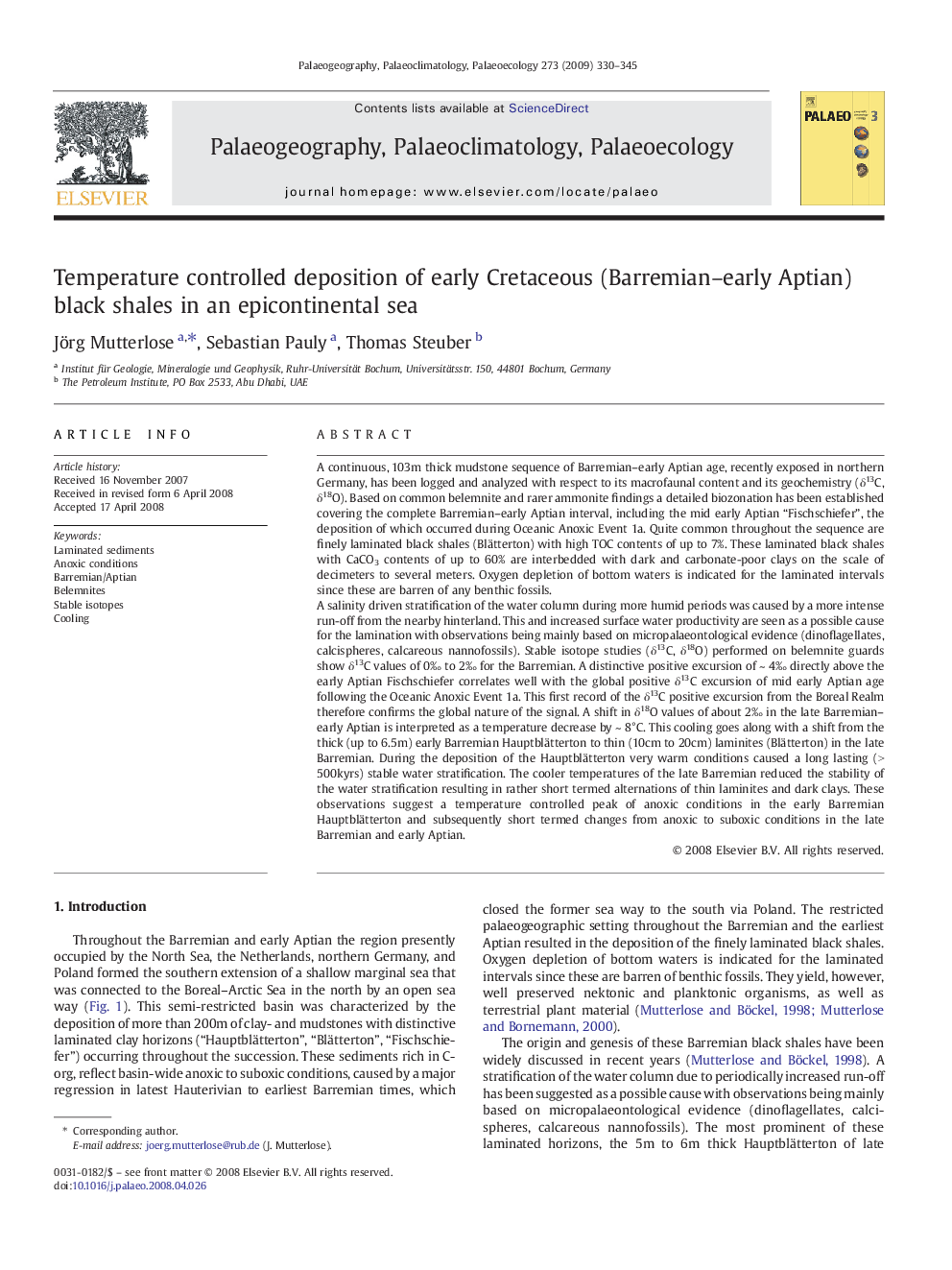| کد مقاله | کد نشریه | سال انتشار | مقاله انگلیسی | نسخه تمام متن |
|---|---|---|---|---|
| 4468199 | 1622307 | 2009 | 16 صفحه PDF | دانلود رایگان |

A continuous, 103m thick mudstone sequence of Barremian–early Aptian age, recently exposed in northern Germany, has been logged and analyzed with respect to its macrofaunal content and its geochemistry (δ13C, δ18O). Based on common belemnite and rarer ammonite findings a detailed biozonation has been established covering the complete Barremian–early Aptian interval, including the mid early Aptian “Fischschiefer”, the deposition of which occurred during Oceanic Anoxic Event 1a. Quite common throughout the sequence are finely laminated black shales (Blätterton) with high TOC contents of up to 7%. These laminated black shales with CaCO3 contents of up to 60% are interbedded with dark and carbonate-poor clays on the scale of decimeters to several meters. Oxygen depletion of bottom waters is indicated for the laminated intervals since these are barren of any benthic fossils.A salinity driven stratification of the water column during more humid periods was caused by a more intense run-off from the nearby hinterland. This and increased surface water productivity are seen as a possible cause for the lamination with observations being mainly based on micropalaeontological evidence (dinoflagellates, calcispheres, calcareous nannofossils). Stable isotope studies (δ13C, δ18O) performed on belemnite guards show δ13C values of 0‰ to 2‰ for the Barremian. A distinctive positive excursion of ~ 4‰ directly above the early Aptian Fischschiefer correlates well with the global positive δ13C excursion of mid early Aptian age following the Oceanic Anoxic Event 1a. This first record of the δ13C positive excursion from the Boreal Realm therefore confirms the global nature of the signal. A shift in δ18O values of about 2‰ in the late Barremian–early Aptian is interpreted as a temperature decrease by ~ 8°C. This cooling goes along with a shift from the thick (up to 6.5m) early Barremian Hauptblätterton to thin (10cm to 20cm) laminites (Blätterton) in the late Barremian. During the deposition of the Hauptblätterton very warm conditions caused a long lasting (> 500kyrs) stable water stratification. The cooler temperatures of the late Barremian reduced the stability of the water stratification resulting in rather short termed alternations of thin laminites and dark clays. These observations suggest a temperature controlled peak of anoxic conditions in the early Barremian Hauptblätterton and subsequently short termed changes from anoxic to suboxic conditions in the late Barremian and early Aptian.
Journal: Palaeogeography, Palaeoclimatology, Palaeoecology - Volume 273, Issues 3–4, 15 March 2009, Pages 330–345